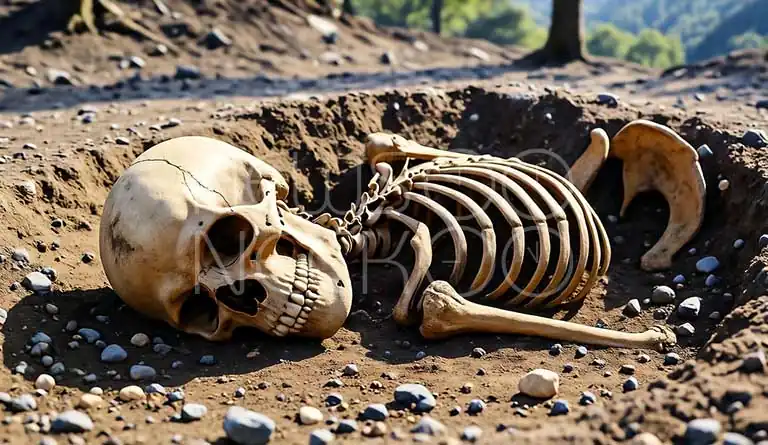The Hidden Story in the Teeth: How a Teenage Boy’s Skeleton Reveals Edinburgh’s Black Death Secret
For over 40 years, he was just a number in a box one of 115 skeletons carefully stored away in a city archive. Excavated in 1981 to make way for new steps at the historic St Giles’ Cathedral, these bones held silent stories of Edinburgh’s earliest residents. Now, thanks to cutting-edge science, one of those skeletons has spoken, revealing a dramatic secret that changes our understanding of the city’s past.
The remains belong to a teenage boy who lived and died in the 14th century. And for the first time, scientists have found definitive scientific proof that the Black Death, the terrible plague that wiped out millions across Europe, reached the streets of medieval Edinburgh.
The incredible discovery was not written in a history book. It was found hidden in the calcified plaque on the boy’s teeth. Advanced ancient DNA testing revealed the deadly pathogen Yersinia pestis the bacteria that causes the Bubonic plague.
“This teenager carries traces of ancient DNA from the bacteria that caused the Black Death the Bubonic plague which is incredibly fascinating,” said John Lawson, curator of archaeology for the City of Edinburgh Council.He commissioned experts at the Francis Crick Institute in London to conduct the tests.“We’ve always known about the Black Death, but being able to directly connect this individual to that historic event is truly remarkable.”
The Black Death was one of the worst pandemics in human history, sweeping through Europe between 1347 and 1353 and killing an estimated 50 million people. Its name likely came from the blackened skin lesions and gangrene it caused in its victims. Until now, historians knew the plague would have devastated Scotland, but concrete physical evidence from Edinburgh was elusive.
You Also Read it: When Science Stops Asking ‘Can We?’ and Forgets to Ask ‘Should We?
This discovery makes history tragically personal. The boy’s careful burial tells a poignant story. Unlike the mass graves commonly used for plague victims, this teenager was laid to rest with care and respect. This suggests that even in the face of a terrifying and poorly understood disease, his community ensured he received a dignified burial.
The skeleton dates from between 1300 and 1370, a period that squarely overlaps with the pandemic. The new analysis is part of a larger project called Edinburgh 900, celebrating the city’s 900th anniversary. Scientists are using a toolkit of modern methods including isotopic analysis and radiocarbon dating to peer into the lives of the city’s first citizens.
“This pioneering work has even ascertained where the people, who were buried between the 12th Century and 1560, were born,” Mr. Lawson explained. By analyzing trace chemicals from the water they drank, researchers have mapped their origins. Early results show most were from the Lothians area, with one or two from the Scottish Highlands.
The project has already brought other medieval Edinburghers back to life, using facial reconstruction technology to show what they looked like. But the story of the boy with the plague offers a deeper, more somber connection to the past.
“Thanks to this exciting new research, we’ve been able to get a closer insight into the lives of those who existed through such a notable chapter in our past,” said Margaret Graham, City of Edinburgh Council’s culture and communities convener. “The discovery of a young male who may have died during the Black Death is a hugely significant find.”
It is a discovery that reminds us that history is not just about kings and battles. It is about a teenage boy, a devastating disease, and a secret held in his teeth for 700 years, finally told.
Author: Yasir Khan
Date: 05 Nov, 2025
For More Updates, Visit Newsneck













